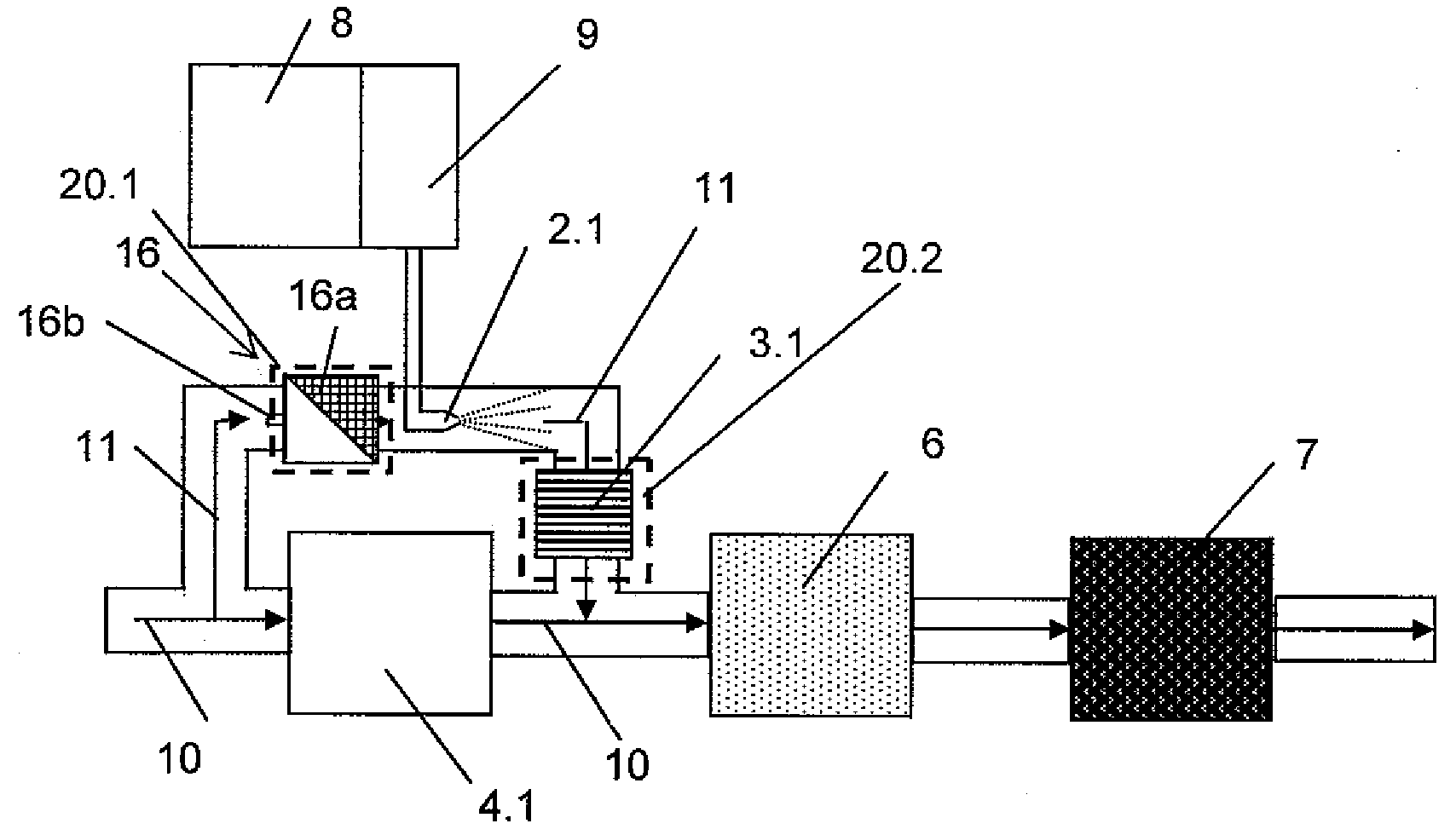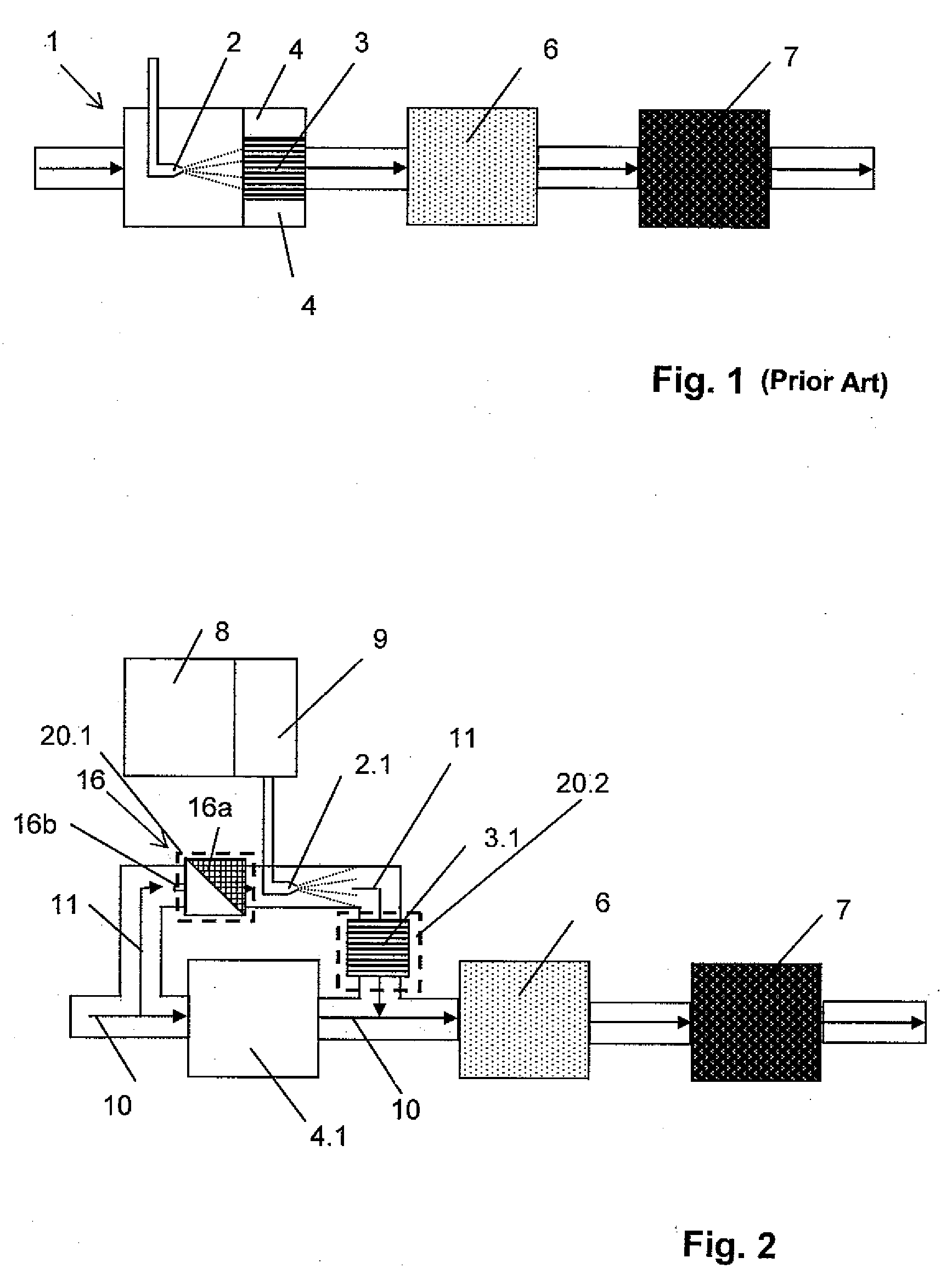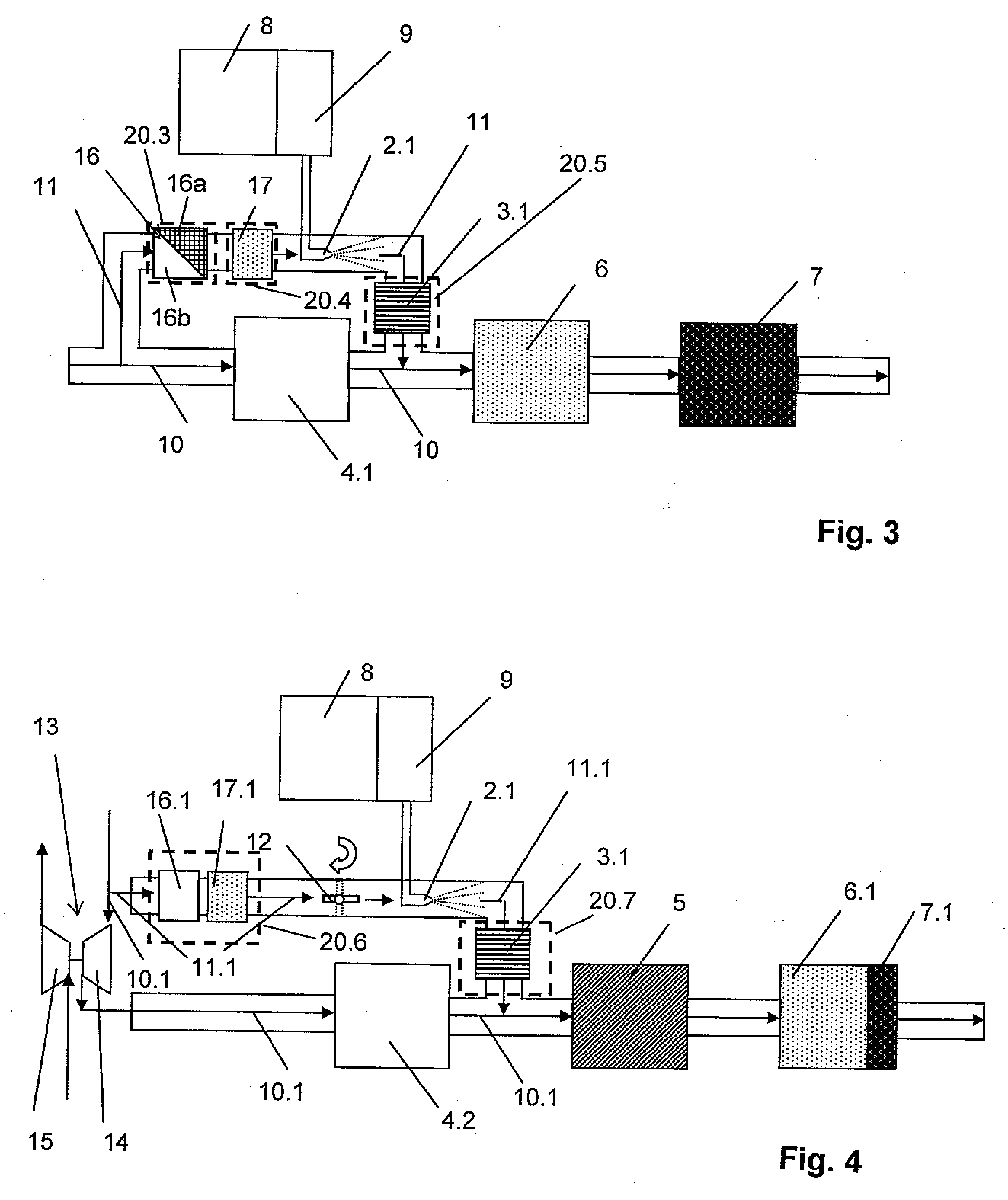Compact Exhaust Gas Aftertreatment System
a technology of exhaust gas aftertreatment and exhaust gas, which is applied in the direction of exhaust treatment, mechanical equipment, engine components, etc., can solve the problems of difficult to apportion the reductant in quantity, increase the back pressure of exhaust gas, and difficult to reduce nitrogen oxide using the scr method in internal combustion engines operating in vehicles, so as to avoid the pitfalls of known arrangements
- Summary
- Abstract
- Description
- Claims
- Application Information
AI Technical Summary
Benefits of technology
Problems solved by technology
Method used
Image
Examples
Embodiment Construction
[0067]First, for purposes of background, a prior art arrangement for removing nitrogen oxides from the exhaust gas in an internal combustion engine by means of selective catalytic reduction is shown schematically in FIG. 1.
[0068]The exhaust gases, represented by arrows in FIG. 1, generated by an internal combustion engine (not shown) through combustion processes initially reaches an exhaust gas processing train 1 in which a reductant is added to the hot exhaust gas as close to the engine as possible. As is customary in practice in motor vehicles with SCR catalyzers, the reductant is an aqueous urea solution. Of course, urea can be added in solid form as has already been thoroughly described in the pertinent technical literature. Further, it is possible to add, as a reductant, ammonia which is obtained from another location, e.g., under favorable thermal conditions, from a substance which splits off ammonia. Metering is carried out depending on the operating parameters of the interna...
PUM
 Login to View More
Login to View More Abstract
Description
Claims
Application Information
 Login to View More
Login to View More - R&D
- Intellectual Property
- Life Sciences
- Materials
- Tech Scout
- Unparalleled Data Quality
- Higher Quality Content
- 60% Fewer Hallucinations
Browse by: Latest US Patents, China's latest patents, Technical Efficacy Thesaurus, Application Domain, Technology Topic, Popular Technical Reports.
© 2025 PatSnap. All rights reserved.Legal|Privacy policy|Modern Slavery Act Transparency Statement|Sitemap|About US| Contact US: help@patsnap.com



